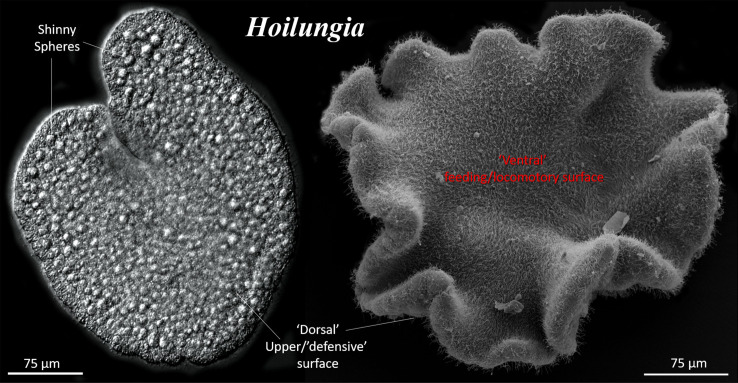Figure 8.
General morphology of the placozoan, Hoilungia [234]. (a) Differential interference contrast (DIC) image of a living animal. Shiny spheres are large specialized cells on the ‘dorsal’ surface, releasing antipredatory toxins [235]. (b) Scanning electron microscopy of the entire animal (see details in [236]). The lower (‘ventral’) side faces the substrate. This site is primarily responsible for active ciliated locomotion and feeding. The upper (‘dorsal’) side is significantly different and contains a few subpopulations of upper epithelium and shiny sphere cells, which might be necessary for the animals' defense.

